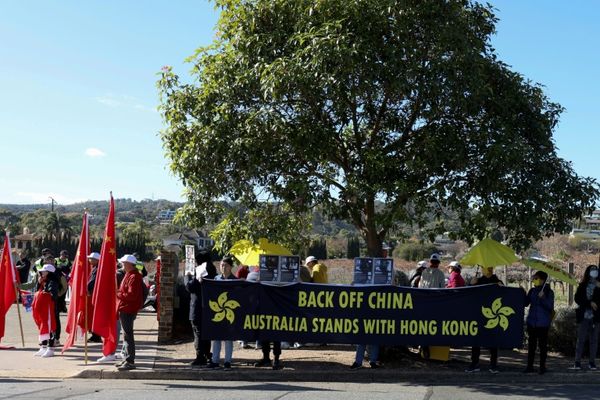
What some consider the ugliest wall in Australia could soon be bigger, with residents pushing to extend the Collaroy seawall on Sydney’s northern beaches.
Northern Beaches council has received a new application by five local property owners to build two new sections of the wall in front of their properties to protect the homes from coastal erosion and massive swells.
Under the plan, a 50-metre and a 30-metre section of wall would be added either side of South Narrabeen Surf Life Saving Club. In total there would be an extra 80 metres of concrete wall constructed.
It would add to the 210 metre-long, seven-metre high existing structure built in response to a fierce storm in 2016 that tore into properties in the area, ripping a private pool from its moorings and leaving some houses at risk of falling into the sea.
Residents would cover 80% of the cost, paying up to $250,000 each, with the state government and local council splitting the rest between them, the ABC reported on Sunday.
The new construction would protect an additional five homes from violent storms which can lash the beach – but would not protect the surf club.
The club could require additional work to protect it from erosion and there could be issues with what is known as “end-wall effects” – a situation where one wall finishes and connects to another structure.
A spokesperson for the Northern Beaches council said the new development application was “under assessment and will be considered on its merits”.
“Our beaches, along with public and private assets along the northern beaches coast, face risks from our changing climate,” they said.
“The damage done to Collaroy beach and various public and private assets in 2016 demonstrated the need for action on this important issue. Retreat is a viable option in some circumstances but on Collaroy-Narrabeen beach, given the hundreds of millions of dollars of property at risk, protection has been the predominant strategy for many years.”
Coastal engineer Angus Gordon, who has been a vocal opponent of the seawall, said the proposed extension violated the Coastal Management Act which prohibits new constructions that interfere with coastal processes.
“I’m not surprised by the application but I am surprised council is treating it seriously after the experience with the existing wall,” Gordon said.
“It was supposed to be a wall that would only protrude one metre to two metres out of the sand, but the beach has dropped dramatically and it now protrudes six metres. At one put council had to put up a sign saying it was dangerous to go along the beach in that area.”
Associate Prof Kristen Splinter, a coastal engineer with the University of New South Wales Water Research Laboratory, said historically bad planning decisions placing homes and public assets close to the water were responsible for the situation at Narrabeen.
Splinter said as storms grow more severe, emergency services will no longer be responding to situations involving property damage, but potentially life-threatening scenarios.
“It’s a sticky, hard situation. I’m fairly neutral in the sense that I see why the private owners want it, and I see why the public are worried about losing their asset,” she said.
“There’s no nice clean situation where everyone seems to win here, so we have to use our best science and our best engineers for how to protect it and learn from those if those things need to change in the future.”
Surf Life Saving New South Wales said a recent audit found none of the 21 clubs on the northern beaches had been affected by coastal erosion “to the extent it would prevent operational lifesaving emergency responses and operations”.
“SLSNSW supports any proactive preventative actions by local and state governments in protecting our surf life saving clubs from coastal erosion and rising sea levels,” a spokesperson said on Sunday.
“SNLSW and Northern Beaches council have a very collaborative and supportive relationship. In regards to the planned extension of the Collaroy sea wall, SLSNSW is confident council and the state government have conducted the appropriate planning and impact studies to ensure any construction will not have any adverse affect on nearby lifesaving clubs and infrastructure.”







